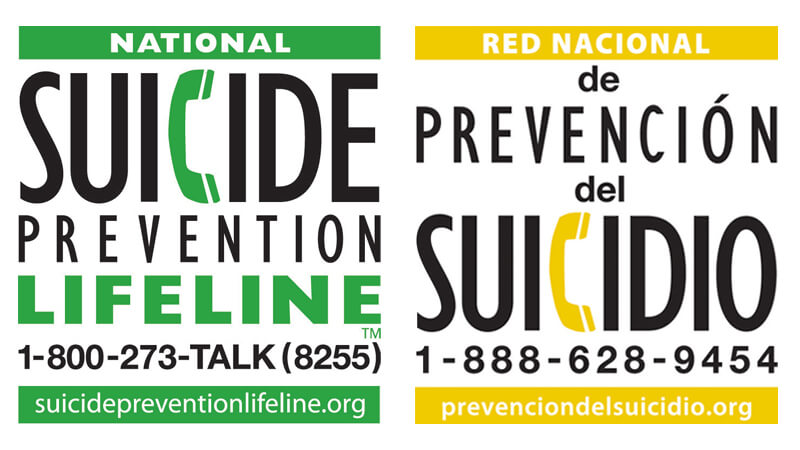December 16, 2020
National Suicide Prevention Lifeline provides free, confidential service 24/7/365

As one of the five pillars of the Healthy Boiler Program, behavioral health plays a key role in overall employee well-being. According to HelpGuide, talking openly about suicidal thoughts and feelings can save a life. To make that easier for individuals to do, the National Suicide Prevention Lifeline (NSPL) was created. Founded in December 2004 by the Substance Abuse and Mental Health Services Administration (SAMHSA), the lifeline provides free, confidential help to anyone in suicidal crisis or emotional distress.
What happens when an individual calls the lifeline?
Crisis workers are available 24/7/365 to provide assistance. Those who call the lifeline at 800-273-TALK (8255) will experience the following:
- An automated message featuring additional options is played while the call is routed to the local lifeline network crisis center.
- Music plays while the call is connected to a skilled, trained crisis worker.
- A trained crisis worker at the local center will answer the phone.
- The crisis worker will listen to the caller, understand how the problem is affecting the individual, provide support and provide the needed help.
Information for individuals who are deaf or hard of hearing is available online. Spanish-speaking individuals can find information on the Ayuda En Español webpage.
Other ways the lifeline provides support
- Lifeline Chat: Connects individuals with crisis counselors for support via web chat. Chat is available 24/7 across the United States. Visit the Lifeline Chat webpage for more details, including FAQs.
- Impact Sheet: A one-page breakdown of the National Suicide Prevention Lifeline.
- National Suicide Prevention Lifeline website: The website contains a plethora of information, resources, tools, FAQs and more including how to get help, learn more, get involved and find providers and professionals. Additionally, specific concerns are addressed in these sections of the website:
- Attempt Survivors: This page is dedicated to those who are coping with deep hurt after surviving a suicide attempt.
- Coping During Community Unrest: Regularly updated with new resources and information, this webpage provides coping tips and resources for education, awareness and more.
- Disaster Survivors: Emotional recovery for those who have survived a natural or human-caused disaster.
- Emotional Well-Being During the COVID-19 Outbreak: Regularly updated with new resources and information, this webpage offers details on COVID-19, coping tips, helpful resources and more.
- Help Yourself: This section of the Suicide Prevention Lifeline website provides information to help someone find a therapist/support group, build a support network, use that support network, make a safety plan and get even more info. Additionally, tips for “Self-Care During the Holidays” are outlined.
- LGBTQ+: This section has resources and information for LGBTQ+ individuals as well as information to help support LGBTQ+ individuals in a person’s life.
- Loss Survivors: Resources are available here to help survivors of suicide loss cope.
- Mental Health & Suicide Prevention Glossary: Highlights common terms used when talking about suicide prevention.
- Native Americans: Native American and Alaskan Native populations can be at a higher risk for depression and suicide, and this webpage provides information specifically for those populations.
- Veterans: Resources provided specifically for veterans and service members.
- Youth: According to NSPL, suicide is the second-leading cause of death for young people between 10 and 24 years, and this webpage is focused on assistance for youth.
- Social media: The lifeline offers information and resources via a variety of social networks; stay up to date via the links below:
‘#BeThe1To’ Campaign
According to the Centers for Disease Control and Prevention (CDC), suicide remains a major public health problem and is the 10th-leading cause of death for all Americans. Each year, more than 36,000 people take their own lives. In addition, more than 374,000 are treated in emergency departments for self-inflicted injuries. However, the National Suicide Prevention Lifeline and the National Action Alliance for Suicide Prevention know it’s possible to reduce deaths from suicide. “#BeThe1To” is the lifeline’s message that spreads the word about actions everyone can take to prevent suicide.
The campaign focuses on five action steps for communicating with someone who may be suicidal.
- Ask.
- Be there.
- Keep them safe.
- Help them connect.
- Follow up.
ADDITIONAL INFORMATION REGARDING MENTAL HEALTH
Faculty and staff resources
As one of the five pillars of the Healthy Boiler Program, behavioral health plays a key role in overall employee well-being. Referred to by many names – behavioral health, mental health, emotional well-being and more -- one thing is certain, it’s important, and resources are available to faculty, staff and students at Purdue.
- The recent email -- Mental Health Impacts Overall Health -- provides a quick look at a variety of resources.
- The Mental Health Resources webpage also offers a list of resources offered via Purdue and the community.
To assist students
Faculty and staff who work with students or have a student at home can direct students to the resources below for behavioral health assistance. Note: LiveHealth Online Psychology and LiveHealth Online Psychiatry services are also available to Purdue students who are covered on a Purdue health plan. Mental health visits through LiveHealth Online are covered at 100 percent on the Purdue student health plan.
Office of the Dean of Students
- Continuous Network of Support
- Services and information
- Presentations and trainings
- Student of Concern reporting link
Counseling and Psychological Services (CAPS)
- Therapy Services at CAPS
- Self-help resources
- Group Therapy
- CAPS YouTube channel
- NAMI On Campus – A free, virtual support group on campus.
- Thriving Campus – Service that provides students a way to search for mental health providers in many areas, locally and across the country
- WellTrack – Interactive, self-help therapy app.

